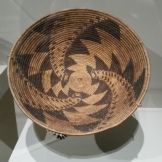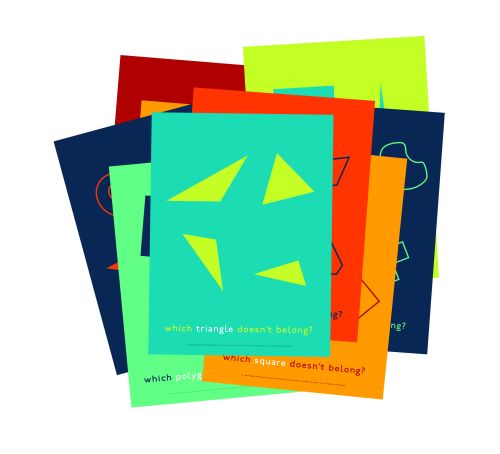I didn’t invent Which One Doesn’t Belong. I’ve told the story of how I came to the idea many times (notably in the teacher guide to my book), but the origins lie here:
Mine isn’t even the first book with this title.

It does appear to be the first whose intention is to invite and welcome diverse perspectives—to take all true ideas about ways to categorize and distinguish, and to call them all “math”.
As with all creative endeavors, I built on the work of others. I learned from it, polished and adapted it, and I offered it up to my colleagues in the hopes that they would use these ideas to invite learners into the intellectual community of mathematics. I want Which One Doesn’t Belong? to widen the range of people who feel that they belong because their ideas matter. I want Which One Doesn’t Belong? to provide a frame for helping others to see the world from new mathematical perspectives, to ask new questions, and perhaps even to help the world see new mathematics.
In everyday life, the meaning of belonging is simple. Dirty socks don’t belong in the refrigerator. A basketball shoe doesn’t belong with a hiking boot. A ball doesn’t belong on a plate of cookies.
It is in this sense that mathematicians adapted the informal language of belonging to the mathematical register as a foundational concept in set theory. 0 either belongs to the set of natural numbers, or it does not (although which of these is true depends on whom you ask). belongs to the set of rational numbers. A square belongs to the set of all polygons.
These two senses of the term belong are what make Which One Doesn’t Belong? a powerful tool for drawing learners into mathematical conversation.
Occasionally in my journeys, I have heard from someone concerned about another sense of belonging—that of students belonging in classrooms, schools, or even in mathematics itself.
I know some things about not belonging in this sense. I don’t belong in public schools—my sense of time and my priorities are very ill-suited to my long-term survival there. I am too interested in the complexity of learning simple ideas to belong in many college math departments, and too interested in the abstractions of mathematics to belong in most education departments. I am too intellectually impulsive and impatient to belong in higher education more generally. (Have I mentioned that I got the idea for and developed the first draft of Which One Doesn’t Belong? in a day? That within five minutes of first visiting the Alphabet Forest, I determined to build the math version of it?)
Perhaps in my Which One Doesn’t Belong? work, I have had some affinity not just for those mathematical outsiders whose ideas (such as the geometry of diamonds) are not valued in textbook mathematics. Perhaps I have also identified a bit with that triangle in the upper left, who has the wrong number of sides to belong on the opening pages of this book, but who does have the right orientation (for now….it is balanced rather precariously).

It is in this third sense of belonging that people sometimes raise concerns. Are we inadvertently sending a message to students that, in the various ways they are different from their classmates, they might not belong? The most honest answer I have is that I don’t know.
We do know that children receive all kinds of implicit and explicit messages about whether they belong in this classroom, this school, doing this mathematics.
In skilled hands, Which One Doesn’t Belong? offers opportunities to unpack those messages—to question and reject them. Opportunities to find alternative ways of conceiving of self and community, as far more nuanced, complex, and important than the sorting of socks or of triangles.
I am also sure that in clumsy or malevolent hands, Which One Doesn’t Belong? could cause real harm. Is that harm alleviated by replacing the language of belonging with the language of differences or uniqueness? I don’t know.
When people have expressed concerns to me in the past, I have had two go-to messages. First is that we must never use children as the constituents of our Which One Doesn’t Belong? sets. Second is that you should absolutely adapt these ideas to work best in your context. Use the parts of this work that will build a welcoming and diverse community of mathematicians in your classroom; modify as necessary, and please report back to the wider community so that we may learn along with you.
I have learned a tremendous amount from the opportunities I’ve had to work with a wide range of audiences—to listen to children, adolescents, parents, and teachers tell me which one doesn’t belong and why. I have also learned a lot from teachers and others in talking about this work. I look forward to seeing how these ideas grow and change with the wisdom and experience of the community.
I look forward to seeing what Which One Doesn’t Belong becomes, and what it inspires.












